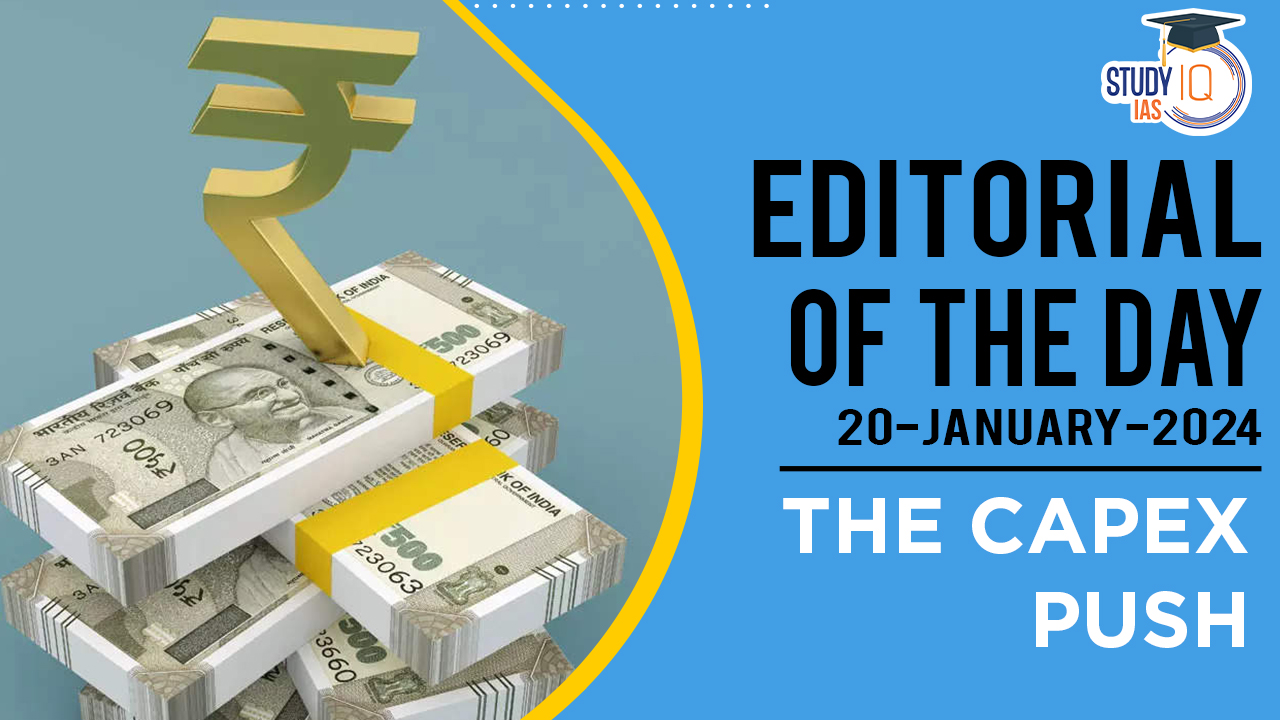Context: Post-COVID-19 States’ fiscal deficits were contained under 3% of GDP in 2021-22 and 2022-23, despite increased borrowing limits set by the Union government.
The Challenge
- State governments, cumulatively, spend more than the central government, accounting for over three-fifths of total general government expenditure.
- The necessity to switch focus from revenue expenditure to capital expenditure (capex).
Initiative
- In the financial year 2023-24, there was a significant shift in spending priority, with more allocated towards capital expenditure.
- The states that significantly increased their capex included Uttar Pradesh, Goa, Manipur, and Meghalaya, with a notable growth by a modest 9.3 per cent from April-September 2023.
We’re now on WhatsApp. Click to Join
Quality and Efficacy
- The ratio of quality of total expenditure to total outlay for these states improved, signifying a shift towards capex.
- There was a shift in capex to the Gross State Domestic Product (GSDP) ratio, indicating a one percent increase in the capital outlay, effectively leading to a 0.08-0.24 percent increase in states’ GDP.
Results
- Despite an overall tepid growth in overall revenue receipts, states had to resort to market borrowings for funding their expenditure due to a decrease in central transfers.
- The gross market borrowings were substantial during the first nine months of FY 2023-24.
- However, a significant portion of these borrowings was not allocated for capex but for revenue purposes.
Implications
- States’ capital expenditure saw significant funding via an array of complex processes, including tax devolution and the release of instalments under centrally sponsored schemes.
- The Union government advanced capital expenditure grants, approving and releasing a sizable amount for the scheme budgeted till November 2023-24.
Conclusion
- The shift towards increased capex by states indicates a positive trend towards bolstering growth.
- However, the challenge remains in ensuring that borrowings and funds are efficiently utilised for the intended capex to stimulate economic activity and infrastructure development.
- The need for improved tax administration and efficiency is also highlighted to augment the states’ own revenue, thereby reducing reliance on central transfers and borrowings.


 Bharat Bandh 9 July 2025: Over 25 Crore ...
Bharat Bandh 9 July 2025: Over 25 Crore ...
 Sukhoi Su-57: Will India Choose Russia�...
Sukhoi Su-57: Will India Choose Russia�...
 World Bioproduct Day 2025: Date, Theme, ...
World Bioproduct Day 2025: Date, Theme, ...





















